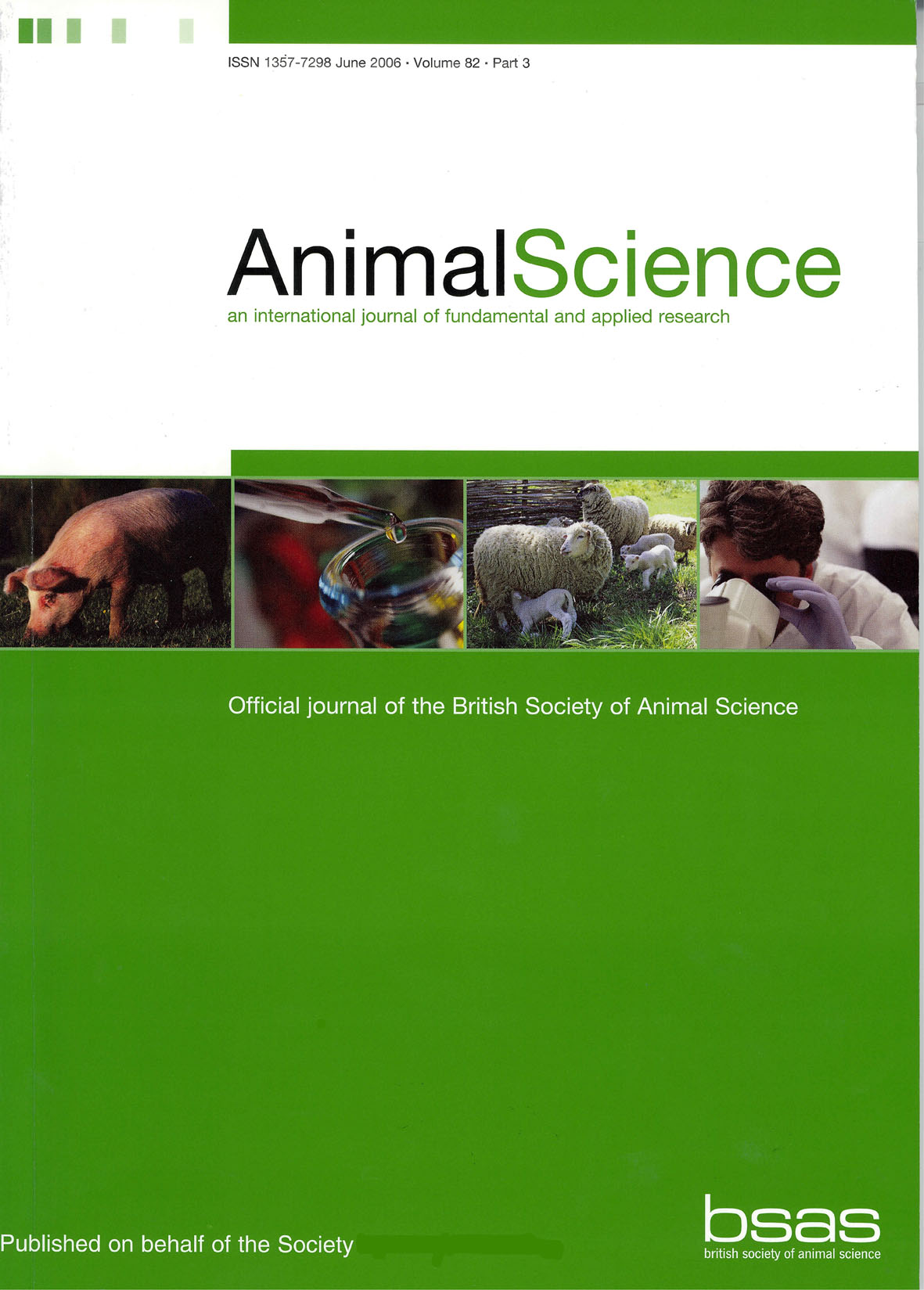No CrossRef data available.
Article contents
A note on the effect of forage type on the yield, chemical composition and clotting properties of milk
Published online by Cambridge University Press: 25 May 2016
Extract
Twenty-five primiparous cows in mid lactation were used in a 2 × 2 Latin-square design experiment. During each 3-week period, cows were offered a diet composed either of grass silage (8.3 kg dry matter (DM) per day) or hay (10.5 kg DM per day). Each diet was supplemented with a mixture of barley, soya-bean meal and urea in proportions calculated to keep the overall rations isocaloric and isonitrogenous. Cows offered grass silage produced more milk (+1.7 kg/day, P<0.01) with less fat and protein (−1.3 g/kg and −0.8 g/kg, respectively, P < 0.01) than those offered hay. All animals gained weight, but they gained more with the hay diet than with the grass silage diet. The rheological parameters of milk were similar in both groups. Rumen juice of cows offered hay had higher concentrations of acetic acid and slightly lower concentrations of propionic and butyric acid (P < 0.01) than cows offered grass silage.
Information
- Type
- Research Article
- Information
- Copyright
- Copyright © British Society of Animal Science 1993

